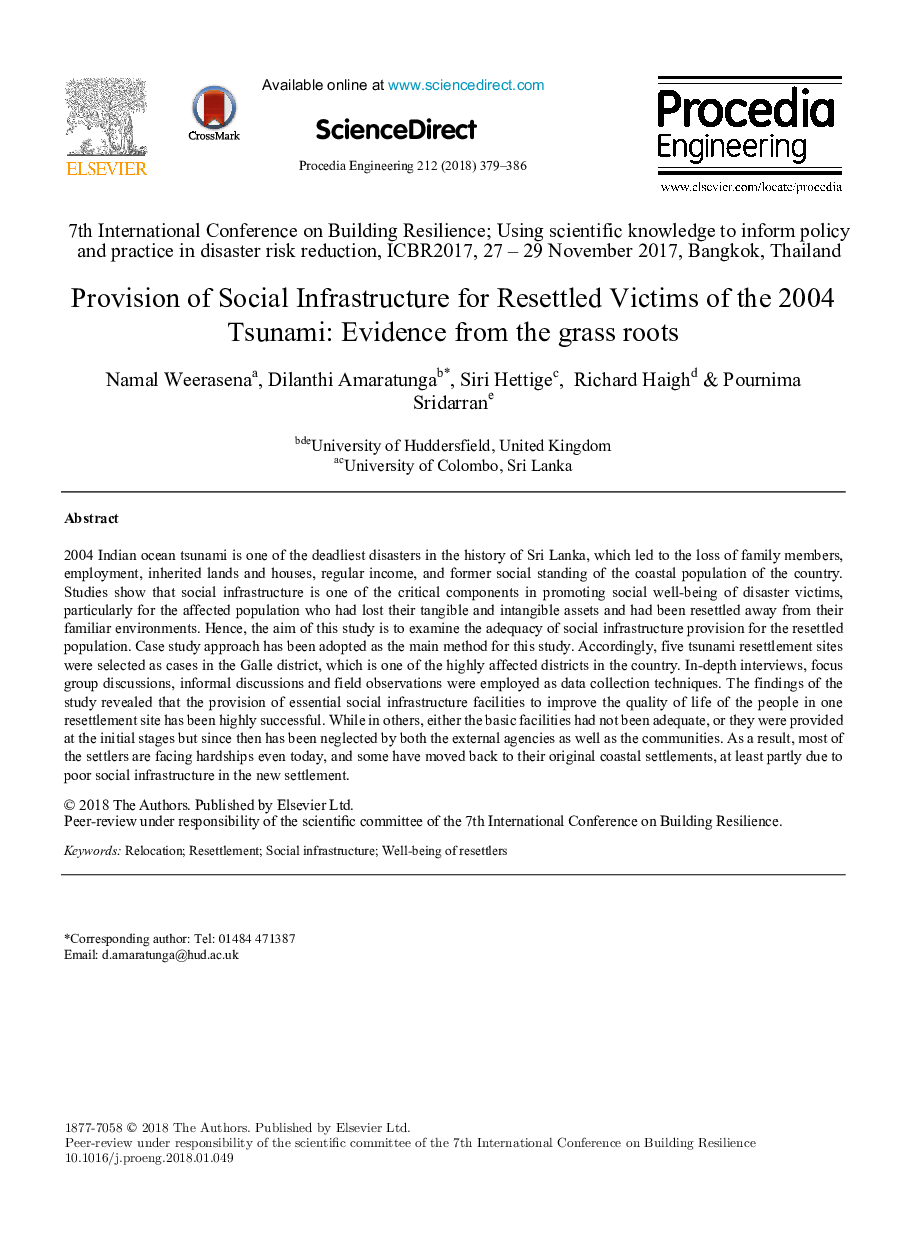| Article ID | Journal | Published Year | Pages | File Type |
|---|---|---|---|---|
| 7225991 | Procedia Engineering | 2018 | 8 Pages |
Abstract
2004 Indian ocean tsunami is one of the deadliest disasters in the history of Sri Lanka, which led to the loss of family members, employment, inherited lands and houses, regular income, and former social standing of the coastal population of the country. Studies show that social infrastructure is one of the critical components in promoting social well-being of disaster victims, particularly for the affected population who had lost their tangible and intangible assets and had been resettled away from their familiar environments. Hence, the aim of this study is to examine the adequacy of social infrastructure provision for the resettled population. Case study approach has been adopted as the main method for this study. Accordingly, five tsunami resettlement sites were selected as cases in the Galle district, which is one of the highly affected districts in the country. In-depth interviews, focus group discussions, informal discussions and field observations were employed as data collection techniques. The findings of the study revealed that the provision of essential social infrastructure facilities to improve the quality of life of the people in one resettlement site has been highly successful. While in others, either the basic facilities had not been adequate, or they were provided at the initial stages but since then has been neglected by both the external agencies as well as the communities. As a result, most of the settlers are facing hardships even today, and some have moved back to their original coastal settlements, at least partly due to poor social infrastructure in the new settlement.
Related Topics
Physical Sciences and Engineering
Engineering
Engineering (General)
Authors
Namal Weerasena, Dilanthi Amaratunga, Siri Hettige, Richard Haigh, Pournima Sridarran,
